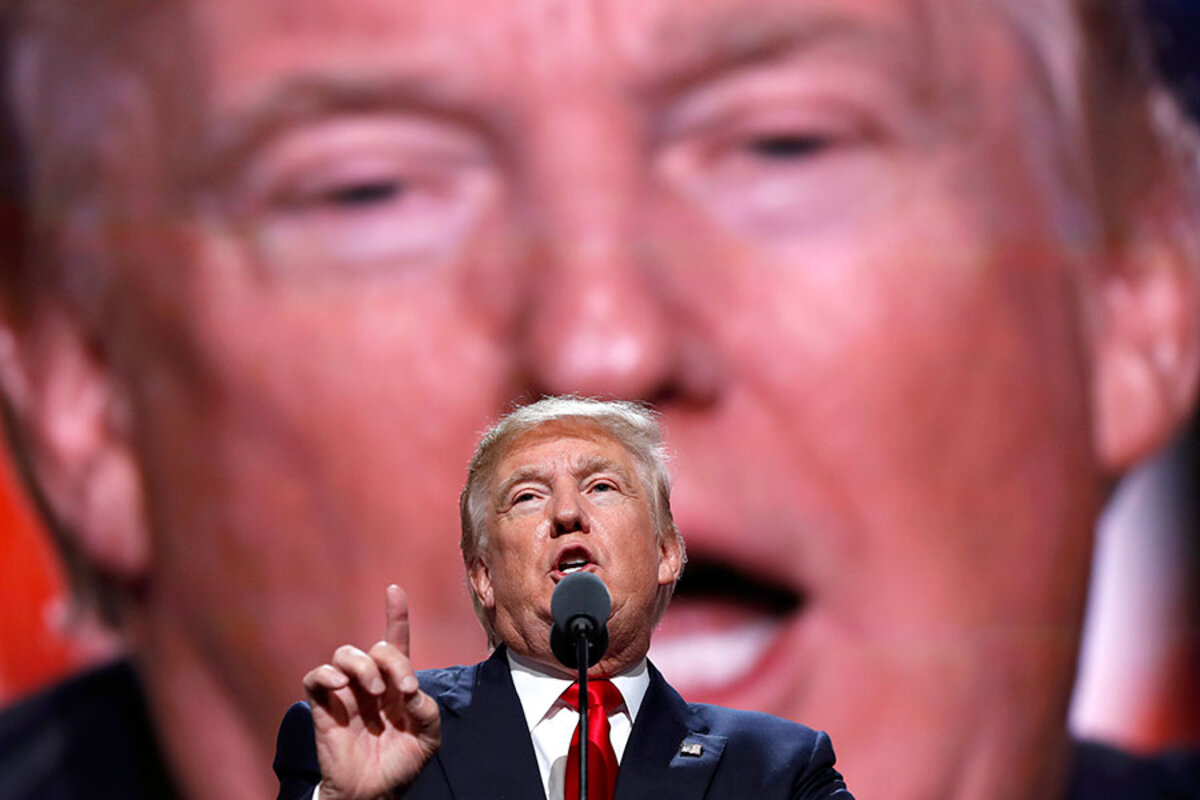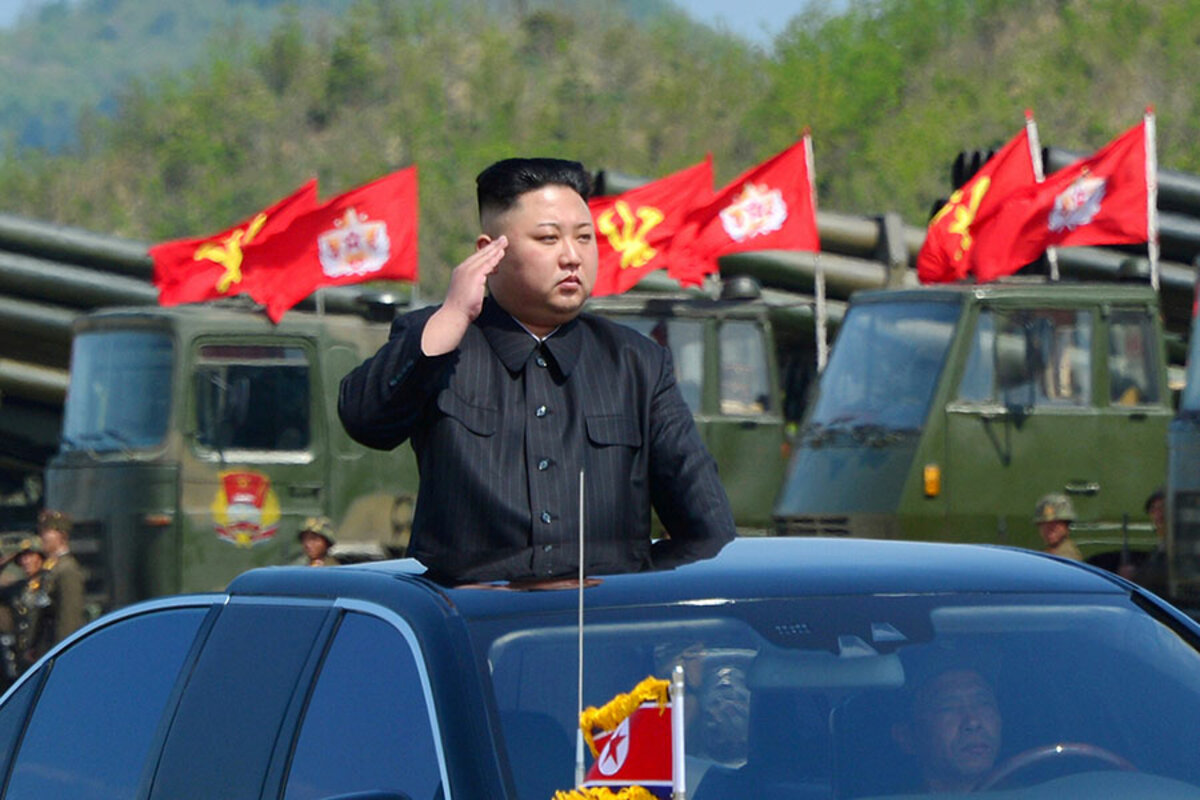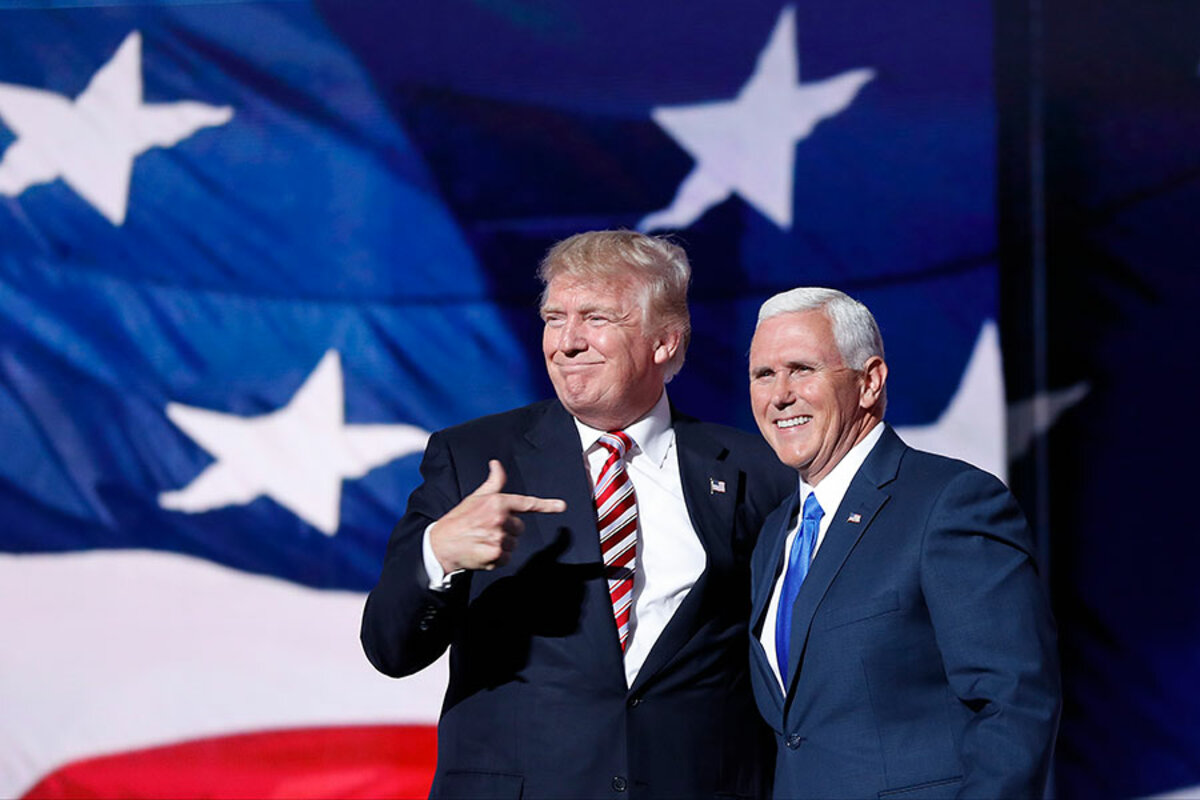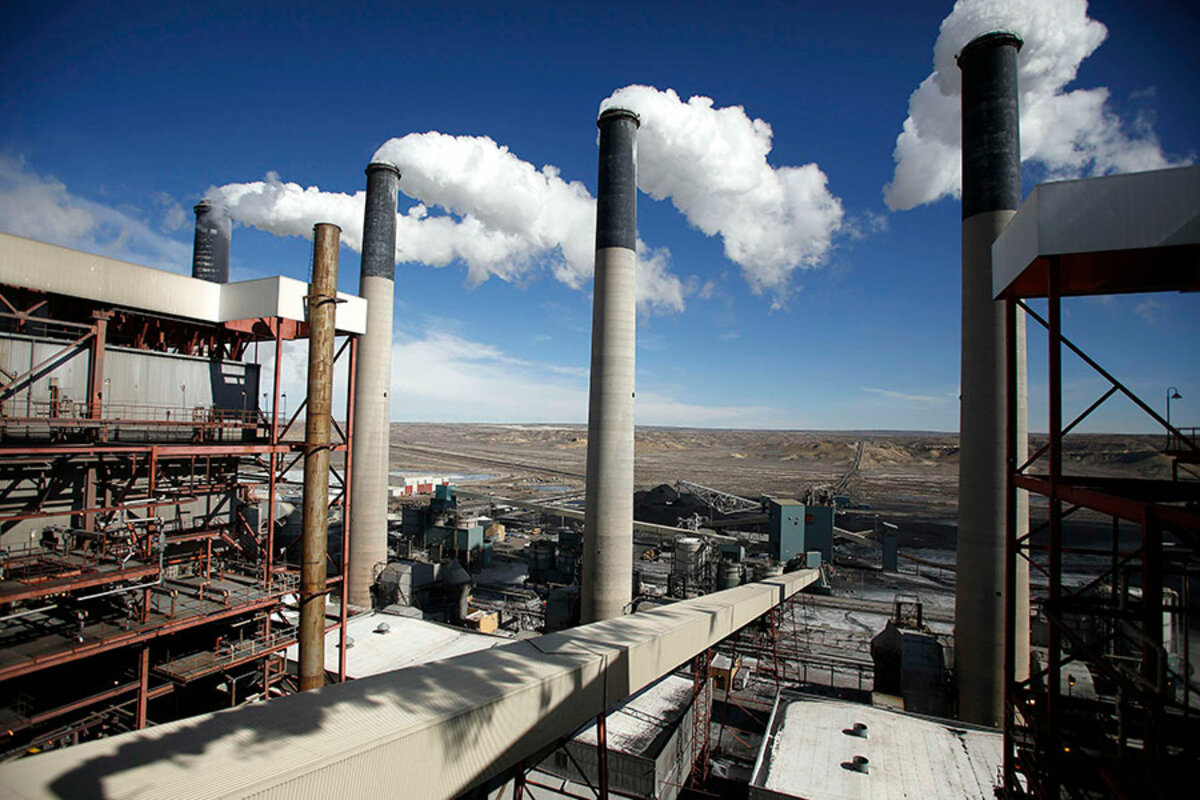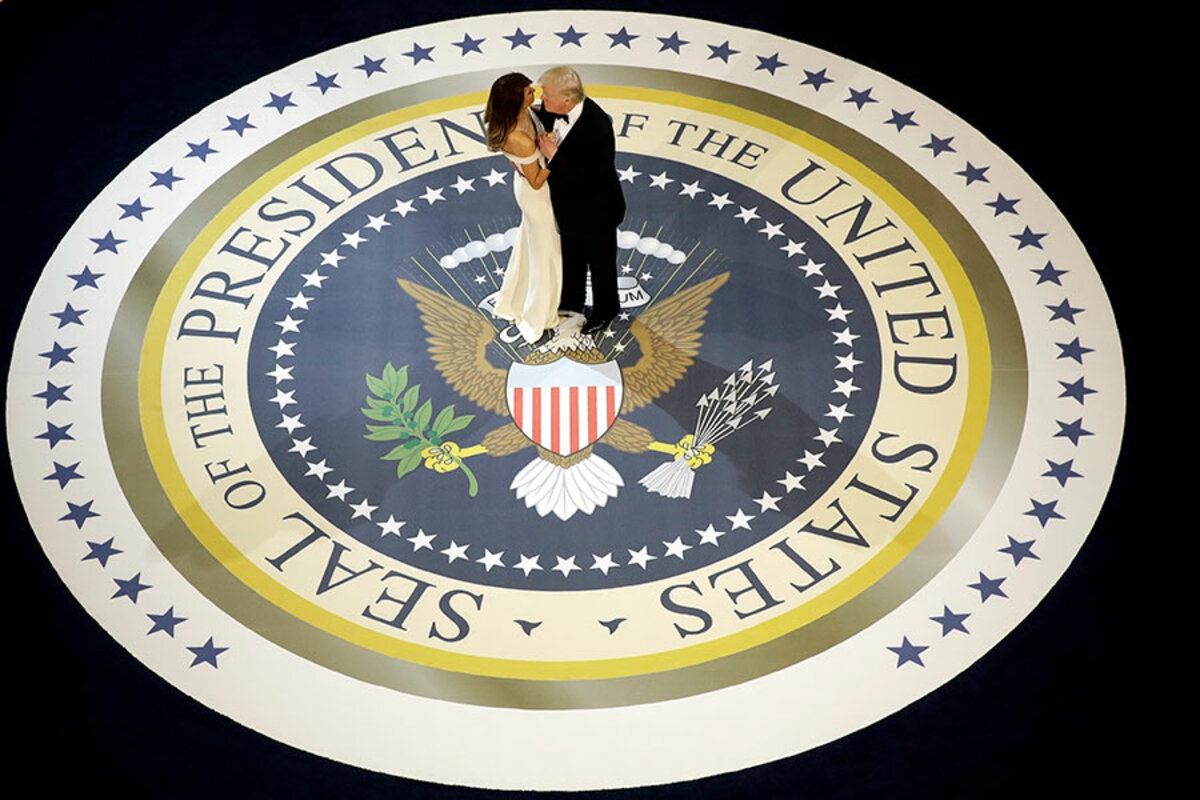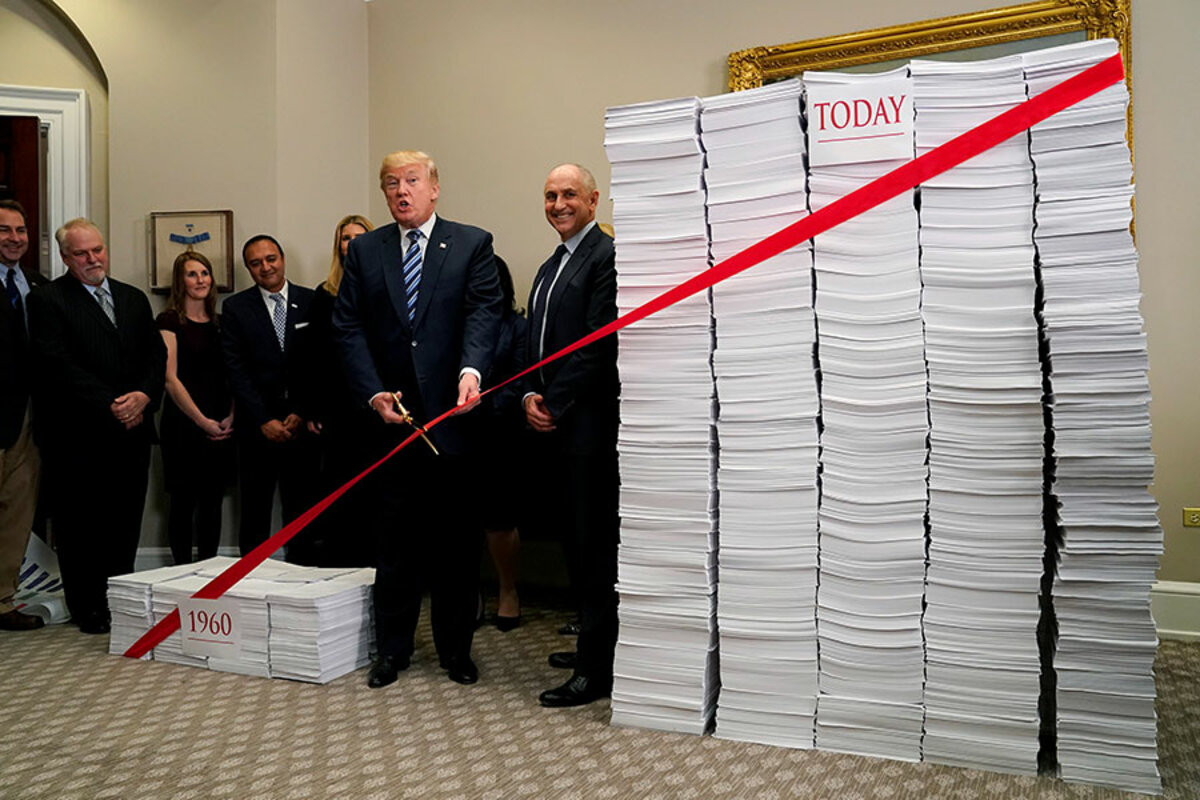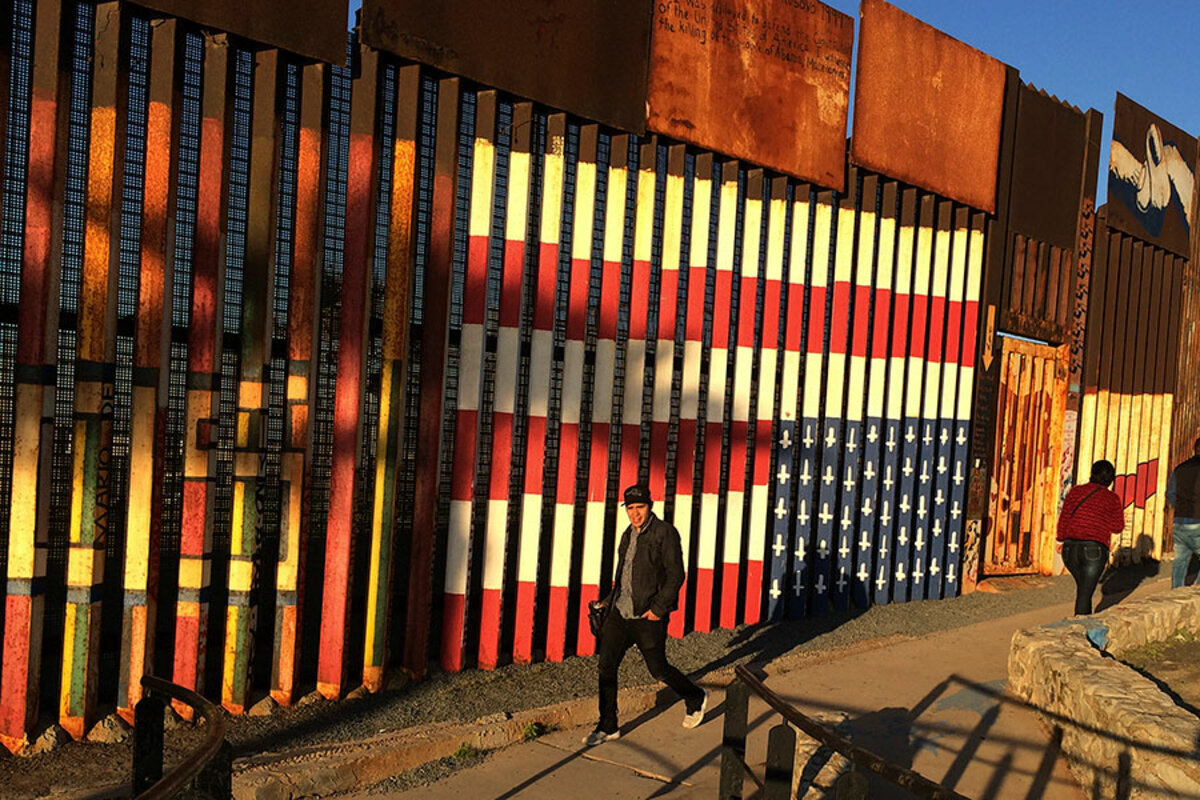It was President Trump’s first real national security scare.
North Korea had just tested a ballistic missile, and Mr. Trump was dining outside at his Florida resort with Prime Minister Shinzo Abe of Japan. Aides hovered around them; one shined the light of his cellphone on documents the two leaders were reviewing. A Mar-a-Lago Club member sitting nearby snapped pictures and posted them on Facebook.
“Wow.....,” Richard DeAgazio wrote, “the center of the action!!!”
The Mar-a-Lago terrace had, in effect, become an open-air White House Situation Room, but without the high-level security of the West Wing basement room where the president and top aides usually meet to address world crises. At that moment, just 24 days into Trump’s presidency, some Americans’ fears of having a novice to government serving in the top job crystallized.
Would Trump accidentally reveal classified information in public? Would he respond prudently to North Korea’s provocation? Was he really ready to do the job he had won, defying expectations, just a few months earlier?
A year into Trump’s presidency, North Korea remains a top security threat – and Trump’s freewheeling, norm-busting approach to the presidency is the new normal. The dizzying turnover of top staff and breathless media reports of palace intrigue – as evidenced by the recent brouhaha over the new tell-all book on Trump’s first year, “Fire and Fury” – have only enhanced the sense of reality-TV-style drama. So has the investigation into possible Russian collaboration with Trump associates in the 2016 campaign. Ditto the women accusing Trump of past sexual misdeeds.
The explosions around “Fire and Fury” are only the latest disruptions – from former top Trump aide Steve Bannon’s reported assertion of “treasonous” behavior by Trump family members, to Trump’s break with Mr. Bannon and threats of legal action against him.
In countless other ways, from his provocative use of Twitter to his aggressive use of executive power to his attacks on the news media, Trump has disrupted American life, the American presidency, American politics, and America’s place in the world.
“As Winston Churchill once said of an American cabinet member, ‘He’s a bull who carries his own china shop with him,’ ” says Barbara Perry, director of presidential studies at the University of Virginia’s Miller Center.
To Trump supporters, that’s exactly the point: They voted for someone who would “fight back” and shake up a Washington power structure – “the swamp” – that they believe stopped serving the people a long time ago. And they say he is delivering. Trump’s war on government regulation has rolled back scores of policies on the environment, education, law enforcement, energy, and the internet.
To critics, Trump represents the sum of all fears: a populist demagogue who preys on voter anger, stokes racism, enacts self-enriching policies, and fans the flames of class division and partisan polarization that have been growing for decades. Some House Democrats are already pushing for impeachment, and held a symbolic vote in December, despite opposition from Democratic leaders.
In truth, the Trump disruption so far hasn’t proved to be as, well, disruptive as it could have been. Trump is not a dictator – far from it. Respect for the Constitution remains deeply embedded in the American psyche. The two-party system remains vibrant, as seen last month in Doug Jones’s stunning upset in the Alabama special Senate election – a rare Democratic victory in a deeply Republican state.
“It looks so far like our system is more resilient than a lot of people thought it was,” says Gene Healy, vice president of the libertarian Cato Institute and author of the book “The Cult of the Presidency: America’s Dangerous Devotion to Executive Power.” “The courts and to some extent Congress have pushed back.”
‘I alone can fix it’
In July 2016, Trump presented himself at the Republican National Convention as a savior who could solve the nation’s ills all on his own, from poverty and violence at home to war and destruction abroad.
“I alone can fix it,” he boomed.
Trump’s grand rhetoric brought conventiongoers to their feet, and on the political left, sowed fears of an authoritarian-in-the-making. One year into his tenure, experts on presidential power see a man who has, in some ways, pulled the levers of power with singular abandon – both formally and informally – even as he discovers the limits of that authority.
“It’s a fascinating case study,” says Jonathan Turley, a constitutional law professor at George Washington University in Washington. “As controversial as many of the statements and actions of President Trump are, he has not pushed the envelope of executive privilege as much as President Obama did during his presidency.”
Indeed, Trump’s use of executive power so far has centered on undoing Barack Obama’s legacy, many elements of which Obama had bypassed Congress to carry out. Trump pulled the United States out of the Trans-Pacific Partnership trade deal and the Paris climate accord, decertified the Iran nuclear pact, and in perhaps his most explosive decision, announced the end of DACA – Deferred Action for Childhood Arrivals, which protects some 800,000 young unauthorized immigrants from deportation.
Obama himself foresaw the risk of relying on executive authority – and even warned President-elect Trump to be careful about going down that path.
“Going through the legislative process is always better, in part because it’s harder to undo,” Obama told NPR a month before leaving office.
It wasn’t until the third year of Obama’s presidency, after the Democrats had lost control of the House, that he began to rely on executive power to enact major policy shifts. So comparing one year of Trump with eight years of Obama isn’t quite fair.
Trump, like Obama, began his presidency with both houses of Congress under his party’s control, and so going the legislative route to enact major policy change made sense. Besides, matters involving the federal budget and taxation must go through Congress. Initially, Trump struggled to learn the art of the legislative deal – failing to repeal and replace the Affordable Care Act, or “Obamacare,” before passing tax reform. It was the only major piece of legislation he got through Congress in his first year.
The true test of Trump’s approach to executive power may come a year from now – after the November 2018 midterm elections – if the Republicans lose control of one or both houses of Congress.
“If one of the houses does flip, there will be a lot of pressure on Trump to act as Obama did in the face of legislative opposition,” says Mr. Turley.
And if Trump does move toward more aggressive use of executive authority, he will be following a certain tradition. Obama was dubbed an “imperial president,” just as he had accused his predecessor, George W. Bush, of being. Presidents Richard Nixon, Harry Truman, and Franklin Roosevelt were all parties to landmark Supreme Court cases challenging their aggressive uses of executive power.
A larger question may be whether Congress can find its way back to its rightful place as a vehicle for bipartisanship and compromise. Scholars on the left and right speak of how polarization and other factors have made the legislative branch increasingly dysfunctional.
“I think the greatest challenge facing the Trump administration – or actually, any administration – these days is that Congress is broken,” says Daniel Bonevac, a philosophy professor at the University of Texas at Austin. He blames budgeting procedures put in place after Watergate that had the unintentional effect of making compromise more difficult.
“I don’t think President Trump is responsible, in short, for the change in norms,” says Mr. Bonevac. “I think he’s a response to the change in norms.”
A controversial travel ban
In his inaugural address, on Jan. 20, 2017, Trump painted a bleak picture of “forgotten men and women” and “American carnage.”
“Now arrives the hour of action,” the new president pledged.
A week later, Trump announced a “travel ban,” temporarily barring entry into the US by nationals from seven predominantly Muslim countries. It was Trump’s first major executive order, and it suggested that the billionaire businessman used to issuing commands and seeing them carried out would try the same approach from the Oval Office.
The checks and balances limiting the power of American presidents, as enshrined in the Constitution, were in for a test.
The answer came quickly. Within days, amid protests at American airports, a federal judge blocked the measure nationwide. Legal experts slammed the order as sloppily drafted. Trump responded with decidedly unpresidential rhetoric, lashing out on Twitter at “this so-called judge” – an echo of his 2015 slur against the Mexican-American judge handling the lawsuit against Trump University.
But the government agencies implementing the ban backed down, following the judge’s order. A revised travel ban was also blocked, and in December, the Supreme Court allowed a third version to proceed in full while lower courts review the merits.
That decision suggests the Supreme Court could uphold the ban, in keeping with the principle that presidents have broad authority to control who may enter the country. And so, in the end, Trump may well prove victorious on this issue. But the path to fulfillment has been bumpy.
Despite Trump’s desire to present himself as the biggest and the best, his use of executive orders has not been unusual. Obama issued an average of 35 per year, President Ronald Reagan 47, and President Jimmy Carter 80. Trump is on track to issue 59 in his first year (he had signed 55 through the end of 2017). But it’s not about numbers; it’s about what the orders do.
The Twitter effect
Most journalists covering the White House have the same routine: Wake up, grab phone, check @realDonaldTrump to see what’s on POTUS’s mind.
Trump’s early-morning tweets can set the day’s agenda. At times, they merely let people know what he was watching that morning – often Fox News. They can be witty or pungent, controversial or straightforward. Some contain falsehoods.
Sometimes Trump’s tweets push the bounds of good taste, as when he called North Korean President Kim Jong-un “short and fat.” But over the course of a day, Trump’s Twitter feed is rarely dull. And it is arguably the most revolutionary aspect of his presidency. With this simple tool, Trump has changed the tone of an office that is usually dignified, often a force for national unity, and turned it on its head. Internationally, Trump tweets have stoked diplomatic riffs. In the US, political polarization has deepened.
But Twitter is Trump’s way of communicating directly with his base, and his supporters appreciate that.
“I follow him because I want to see what he’s saying myself and not have someone interpret it for me,” says Annie Anthony, a 50-something Trump voter who runs a volunteer center in Wilmington, N.C.
But she calls Trump’s language “unprofessional” – a common complaint, even among Trump supporters. “He uses words like ‘sad’ and ‘bad.’ That’s first-grade language,” says Ms. Anthony, speaking at a recent focus group organized by pollster Peter Hart. “We’re an intelligent population who elected you. Represent us!”
Trump’s Twitter feed, in fact, isn’t just about the president and his phone. It’s an entire enterprise, with input from social media director Dan Scavino and other advisers.
A Trump White House insider identifies three types of Trump tweets. “There’s one kind where he’s sitting there at 5 in the morning in his pajamas, tweeting,” he says. “These are the kinds of things that make his staff scream into pillows.”
The next kind of tweet involves Trump saying, “Hey, Dan, get in here,” referring to Mr. Scavino. Trump says what he wants tweeted, then Scavino composes the words and puts it out. “I’ve been in the Oval Office and seen this,” says the source.
Then there’s the third kind of tweet that never crosses Trump’s desk. Most are anodyne, and come from senior aides – Stephen Miller, Jared Kushner, the White House counsel’s office, says the Trump insider. Occasionally, there are slip-ups – such as the recent tweet about former National Security Adviser Mike Flynn that called into question what Trump knew when he fired him. Trump lawyer John Dowd took the blame for composing that tweet.
“I think that was one of these categories where Trump really never saw the darn thing,” says the Trump insider.
Presidential historians are struck, perhaps above all else, by how Trump’s use of Twitter has shaped his presidency. “Imagine if Franklin Roosevelt or John F. Kennedy had had a hot mic in the Oval Office, and that every time they had a thought, it would go out over the airwaves,” says Ms. Perry of the University of Virginia.
She notes that Roosevelt did just 30 radio “fireside chats” over 12 years, and President Kennedy held an average of two TV news conferences a month.
“They had a sense that they didn’t want to be overexposed,” says Perry. “Now, it’s fascinating there’s someone in the Oval who doesn’t worry about overexposure.”
Presidential scholar Matthew Dickinson says that beneath all the “surface churning,” it’s too soon to say if the Trump presidency has brought more fundamental shifts in the relative power of the president vis-à-vis Congress and the courts.
“But I do see a president who has transformed our expectations on a daily basis about what a president can do in social media, in public relations,” says Mr. Dickinson, a political science professor at Middlebury College in Vermont.
Overturning regulations
Ever the showman, Trump had props ready when he walked into the White House’s Roosevelt Room on Dec. 14 to talk deregulation: piles of paper representing regulations in 1960 (20,000 pages, he said) and today (185,000 pages, standing 6 feet tall).
A big red ribbon stretched across the higher pile, and with oversized scissors, Trump cut through the “red tape” – a bit of theater meant to symbolize his aggressive efforts to roll back regulations.
“We’re just getting started,” Trump said, speaking of a major deregulation effort that goes to one of his campaign mantras: “Drain the swamp.”
In Trump’s lexicon, the term “swamp” can be interpreted broadly – the party “establishments,” the lawyers, the lobbyists, the media, and the bureaucrats of “permanent Washington” who hinder economic growth, he says, with needless rules and regulations.
Trump has spent his short political career trying to lay waste to all those forces. Many key positions at government agencies remain unfilled, some even lacking a nominee. This may seem to be a swamp-draining exercise, though it also hinders Trump’s ability to carry out his policies.
On the regulatory front, Trump’s first year has been momentous – and highly controversial. In January, one of his first executive orders required that two regulations be eliminated for every new one. By December, Trump claimed a ratio of 22 to 1, including two eliminated through congressional action that reportedly saved the government more than $480 million.
The Treasury Department has targeted some 90 banking and financial regulations. The Department of Education has rescinded Obama-era rules on sexual assault on campus and regulations on for-profit colleges. “Net neutrality” – the principle of equal access to internet content – is gone.
But the poster child of Trump-era deregulation has to be Scott Pruitt, administrator of the Environment Protection Agency. Among the scores of actions taken, Mr. Pruitt’s EPA has moved to rescind Obama’s Clean Power Plan, aimed at combating global warming; eliminated rules blocking construction of the Keystone XL and Dakota Access pipelines; and moved to open up off-shore drilling in most US waters, including areas currently protected.
“Like it or not, [deregulation] seems to be one area where he’s doing what he said he would do,” says Susan Dudley, director of the George Washington University Regulatory Studies Center.
Many business leaders believe Trump’s deregulation effort has fueled the booming stock market. True or not, it has at least forced a rebalancing of power in Washington. “The bureaucracy, scarcely mentioned in the Constitution, is a huge branch of government now,” says Dickinson. “It’s not the sexiest topic, but increasingly it’s where the action is. It’s where all these competing powers are vying for influence.”
Trump’s attention to the “administrative state” is a welcome development, at least from a constitutional standpoint, says Turley. “I don’t happen to agree with his priorities; for one thing I’m sort of a tree-hugger,” says Turley. “But there was a need to rebalance power, particularly between Congress and the agencies. We’re seeing a real effort now in Congress to find ways of reinforcing congressional oversight.”
Soon after taking office, top aides to Trump and the congressional leadership met to deploy a little-used law called the Congressional Review Act to eliminate Obama’s final regulatory actions. In all, 14 regulations were overturned in short order.
It was a quiet but significant effort – and a reminder that Congress, as a co-equal branch of government, has more power than it often chooses to use. And it enabled Trump to add to his tally of promises kept.
Promises kept
Prototypes for Trump’s promised wall on the US-Mexican border went up in October. His “travel ban” is in effect. He recognized Jerusalem as the capital of Israel, bucking decades of US policy and sparking an uproar. He took action against “sanctuary cities,” though a federal judge blocked the order. He passed the first major tax reform in 30 years.
Though Trump failed to repeal Obamacare, he used tax reform to kill off a key component – the individual mandate to buy health insurance. A record number of appeals court judges were confirmed in Trump’s first year, as was conservative Supreme Court Justice Neil Gorsuch.
“Probably more than any president in my lifetime, he’s kept his promises,” says Turley.
This, despite the dark shadow hanging over the Trump presidency from the start – the Russia investigation, led by special counsel Robert Mueller since May. Inside the White House, there’s no doubt the probe has been a distraction, especially after the indictments and plea deals of former Trump advisers. But checking off agenda items has been a salve.
The jury is out on whether Trump is governing as a populist. Big tax cuts for corporations and the wealthiest Americans belie that label. And his promises of reduced engagement abroad have yet to materialize.
But through it all, Trump has held onto his core supporters – albeit with historically low job approval for a first-year president, at 39 percent on average through the end of 2017, according to Gallup.
Still firmly in his camp are the Trumpettes, a group of wealthy women who began pushing Trump to run for president back in 2015. On Jan. 18, 2018, at his Mar-a-Lago Club in Palm Beach, Fla., they will host a $300-a-ticket bash to celebrate his first year in office.
For Trump, the Jan. 20 anniversary will be a chance to tout accomplishments, and for Democrats, a day to redouble their resolve to fight – and look forward to the November midterms. Both the House and even the Senate are “in play,” analysts say, especially after the Democratic sweep in Virginia and New Jersey last November, and Senator Jones’s improbable victory last month in Alabama. Women are turning out to vote and running for office in large numbers, ready to do battle against the Trump agenda. A big blue wave appears to be forming.
Trump himself plans to campaign heavily for Republicans ahead of the midterms, to which Democrats say, “Bring it on.” A high-profile Trump is their best motivator.
The top legislative agenda items for 2018 are welfare reform and infrastructure. But with the Republican majority in the Senate now down to 51-49, passing anything significant will be that much more difficult – particularly if Trump loses either house of Congress in the midterms. “On the homefront, there’s been a lot of bluster, though I think he’s learning that the government domestically doesn’t run like a reality show or a business,” says Mr. Healy of the Cato Institute. But overseas, he adds, “the executive branch seems as unrestrained as ever.”
Trump’s ability to act unilaterally abroad has sparked particular concern over nuclear-armed North Korea. In November, fears over whether Trump can be trusted with US nuclear weapons – whose use he can authorize on his own – spurred the first hearings in Congress in 41 years to examine who should control the arsenal.
No further action has been taken, though on another matter – Trump’s ability to remove economic sanctions against Russia – Congress did vote to constrain the president. The larger questions over how Trump handles the powers of the presidency, both formal and informal, hang in the balance. The Trump Show, Year 2, has just begun.



